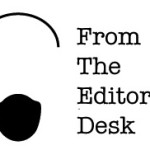Note: This was liveblogged at the time, but the wifi crashed under the weight of 200 simultaneous livebloggers.
———————————————————————————————————
As many readers know, we are staunch proponents of open access. Craig being an academic editor at PLoS ONE and myself writing extensively on the benefits of open access, especially to taxonomy. Open Access is not just free of copyright and licensing fees but is a philosophy based on the “business” of doing science. Bill, one of the session moderators, said “it is a return on public investment”. In fact, universities are getting double dipped by journals because researchers often have to pay to publish their work, while university libraries must pay again to provide access to the journals that their faculty publish in. In fact, he presented a graph where the price of journal of subscriptions was increasing very fast in relation to Consumer Price Index and library salaries. Bjorn Brembs commented on an experience he had recently where he was asked to submit an article to a journal that then asked him for page charges. Unfortunately, his university didn’t subscribe to that journal and wasn’t able to get access to his own published article. The absurdity doesn’t stop there either.
Bob O’Hara, whom it was great to meet and talk with, had some criticisms, as well as others, that some aspects of open access are impractical and that the scientific community is not mature enough for it yet. He felt journal rankings in particular were a useful indicator of an applicant’s research quality. I disagree because you cannot compare journal quality across fields. If Bob, a statistician, was on a hiring committee for an ecologist would his experience and expectation with statistics journals be equivalent to that similar journals in ecology? Taxonomy has only 1 or 2 journals with impact factors above 5. I am excited that my anemones will be published in a journal with an impact factor above 1. Several science librarians in the audience commented that the impact factor was originally developed to help librarians determine which journals to spend money on. It had nothing to do with scientist per se, but seems to have been hijacked by the community to assess one another. Bob discusses his impression on his Nature Network Blog
You can find out which places are open access at ROAR and follow Peter Suber’s blog Open Access News.






While there are other problem with impact factor, this particular issue is not a factor. Thomson posts the impact factor by discipline. Also, it is easy to show a portfolio of journals within your own discipline and calculate the average impact factor.
That being said, the true pain of IF is for those doing interdisciplinary research. Whose to say that an astrobiological article published in a biology journal (which tend to have the highest IF) is any more important that the same article published in an astronomical journal. Its even worse for those of us in social sciences where journals only cover about 40-60% of the disciplinary literature, which in turn drives down the IF of those few peer-reviewed journals that do cover the social sciences.
Thanks for the mention! It was great meeting you in person, finally. I apologize for going on endlessly about graphic novels at 2am, though :-) It took me until 4am that night to get my presentation for the next morning together :-)
Ryan, you should come next time and give a social scientists perspective on how to measure science. I think it would be valuable, given your interests and work at NAS.
Björn, it was actually very interesting! Don’t worry about it. I just put the Dark Knight on top of my Netflix queue because of you. I also stayed up till 4am, but I certainly wasn’t working on my presentation (which was also at 9am).